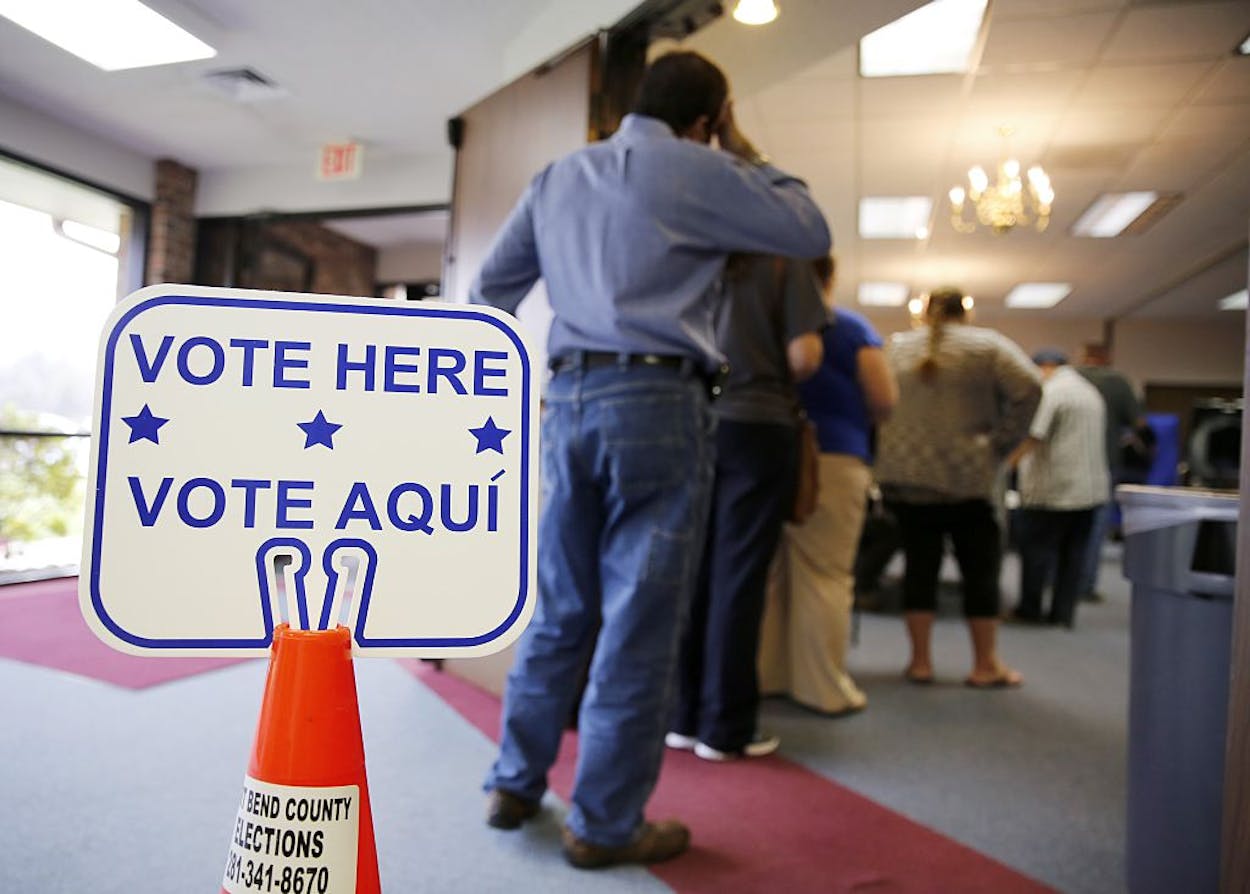Throughout this election, I’ve been skeptical that Hillary Clinton could carry Texas, even as polls suggested the gap in support between her and Donald Trump is closing. But there is a wild card that might make it possible: There are 532,000 more registered Hispanic surname voters this year than in 2012.
Over the past week or so, one news story after another has touted the close race between Clinton and Trump in Texas. The gap has closed, but Clinton seems to be stuck at the same level of support that President Obama received in his 2008 and 2012 campaigns. Obama received just under 44 percent of the vote in 2008 and 41 percent in 2012. Clinton received 43 percent in the CBS/YouGov poll; 41 percent in the UPI/CVOTER; 46 percent in Washington Post/Survey Monkey; and 38 percent in the University of Houston poll. All the while, Trump’s numbers have declined in Texas from a solid majority to levels in the mid 40s. Three out of the four recent surveys put the gap between Clinton and Trump within the margin of error. Trump’s gaffes and personal history have led to voters fleeing his campaign.
Still, the formula for a Clinton victory in Texas has always required that somewhere between 950,000 and 1.2 million people who voted for Obama’s Republican opponents either switching to the Democratic candidate or sitting out the race. It’s now looking like at least half those voters may do exactly that by either not voting in the presidential race or by casting a ballot for one of the third-party candidates, Libertarian Gary Johnson or Green Jill Stein. The other half of the gap conceivably could be closed by newly registered Hispanic voters.
Of course, Democrats have long hoped that Latino voters might help make them competitive again in Texas, and so far that hasn’t happened. One issue is that Latino turnout in Texas has lagged (in 2012, 39 percent of eligible Latinos voted versus 48 percent nationwide). There’s also always been a serious problem with thinking of Latino voters in Texas as automatically supporting Democrats. In 1998 Governor George W. Bush received somewhere between 40 percent and half the Hispanic vote, depending on the survey methodology. In 2014 exit polls showed that Republican U.S. Senator John Cornyn got 48 percent of the Latino vote, and Governor Greg Abbott received 44 percent in his victory over Democrat Wendy Davis. In all of those races, the GOP candidates courted Hispanic voters. Even the CBS News 2016 Battleground Tracker Texas found 31 percent of the Hispanic voters surveyed planned to vote for Trump, despite his harsh rhetoric against Mexicans.
Trump has been playing to the worst fears of white voters around the county by demanding the construction of a wall along the border with Mexico and decrying Mexican immigrants as “criminals, drug dealers, rapists,” and “bad hombres” with the caveat that “some, I assume, are good people.” The problem with that rhetoric in Texas is that many of the new registered Hispanic voters here likely are the U.S. born children of undocumented immigrants who arrived in the late 1980s and early 1990s. When Trump talks the way he has, he is talking about their mothers and their fathers.
Texas this year, according to the Secretary of State’s office, has a record 15 million registered voters, an increase of 1.7 million over 2012. Hispanic surname voters account for 30 percent of that increase. In Harris County, the number of Hispanic voters has increased by more than 91,000 in the past eight years; 69,000 in Bexar County; and 46,000 in Dallas County. Statewide, there are 3.5 million registered Hispanic surname voters this year, 23 percent of the total number of registered voters in Texas.
The odds remain low for Clinton to carry Texas. If she does, Republicans can blame Trump, and Democrats can praise the strength of a new Hispanic voting bloc.






